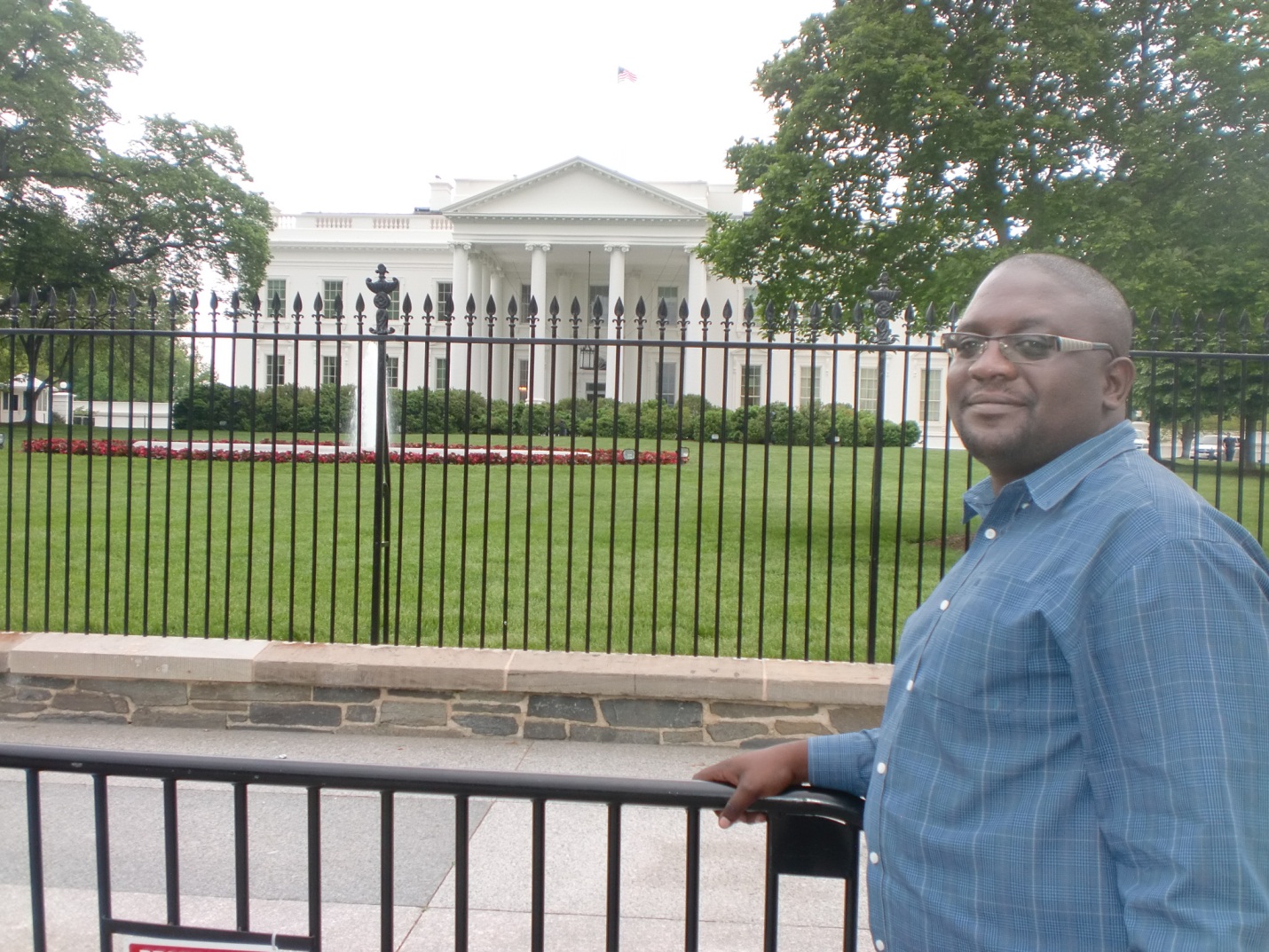-
CreatorTopic
-
09/30/2015 at 5:36 am #3843
 AnneMember
AnneMember1) Give an example of successful stakeholder engagement in protocol and/or IC development. What changes were made as a result of the input gathered?
2) If a protocol gets sent to your trial site in final form, how would you address the GPP recommendation for stakeholder involvement in protocol development?
-
CreatorTopic
-
AuthorReplies
-
-
11/20/2015 at 5:12 pm #4231
 JontrayeMember
JontrayeMemberIn preparation HPTN 073 the HPTN consulted with the BGRG and the Black Caucus. The Black Gay Research Group (BGRG) is a diverse group of Black gay researchers committed to creating a platform for presenting, discussing, and analyzing scholarly work being produced by and on Black gay men. The Black Caucus is a highly knowledgeable interdisciplinary group of dedicated professionals for expert consultation with unique expertise in conducting research on, about, and related to the lives of Black MSM at increased risk for HIV infection. The group provides HPTN protocol teams with technical assistance and oversees community engagement practices for HPTN 073 specifically.
If a version protocol were to reach a site without community stakeholder engagement I would suggest their input should be incorporated immediately. Although the consultation may not affect the study design at that point it could influence study implementation.
-
11/12/2015 at 4:26 pm #4172
 AnjaMember
AnjaMember<span style=”line-height: 1.5em;”>I find this part especially interesting, as my organization haven’t done a lot formative stakeholder engagement yet, but will most definitely need to in the near future, so we have quite a lot of questions around this: </span>
- At what stage of protocol writing do you engage with communities (synopsis, just prior to finalising, etc) as these are usually very short timelines.
- How much detail should be provided on the protocol?
- Would the protocol only go to sites that are selected to be part of the study or should all possible sites be included in the review?
From so many of the examples mentioned it is very clear that this is an essential step, so all of these comments are so informative!
-
11/12/2015 at 1:50 pm #4170
Terfa Simon
MemberEvery protocol is aim at addressing gap in knowledge which will accumulate evidence that will inform policy decision. We engaged policy decision makers and top government functionaries through a process called administrative approval. We usually write and get to make presentation to them on the protocol synopsis (too busy to read ) and require that they officially flag-off activities for the protocol implementation. This usually lead to the involvement of their technical team and create a sense of ownership. It’s slow the process but in a long run it’s helps because both the IRB approval and the administrative approval issued are view as instruments of government authority.
Addressing a finished protocol, I will organize protocol review meeting with key stakeholders including an existing CAB.
-
11/11/2015 at 10:27 pm #4161
 AliciaMember
AliciaMemberMost recently, in starting up a new program, we used surveys to garner input from our stakeholders for an initial needs assessment to inform our program development. While we started with a concept–building a new training program from patients and advocates–we decided that we would use a needs assessment survey with input from our stakeholder to set priorities for the topics covered in the training. This way, we can ensure that the course an materials we are building are relevant and directly applicable to current stakeholder needs. From this input, it became clear that we needed to further refine our target audience for this training– patients and patient advocates are not always one in the same, and this distinction would likely influence the specific focus and priorities of course leaning objectives. We are planning to hold a broader stakeholder meeting to discuss this issue and to clarify objectives and audiences later this month.
2- I am not in a research or trial site setting, but my organization is currently in process of some shifts in management and restructuring of priorities. So, related to the given scenario/question– sometimes staff often face priorities set by upper management and program concepts handed to us to implement. It is a challenge to then work backwards to think about how to incorporate stakeholder engagement with a plan that is already outlined. Therefore, a core focus of my work in the next couple months will be working with colleagues to outline a formal stakeholder engagement plan to use for our organization– having this in place as a standard procedure or framework for our approach will help to ensure that GPP and stakeholder involvement is integral to all of our work.
-
10/27/2015 at 5:58 pm #4059
 AliceMember
AliceMemberIn our site the CAB members are usually involved in the consent review processes and give a feedback before the trial is set to recruit.
-
10/21/2015 at 1:57 pm #4008
 WadiMember
WadiMemberOur CAB as Hilda mentioned that they are not involved in the developmental phase of the ICF as well as the Protocol. We would get the protocol before it is finalised to review and make any recommendation that the CAB would see fit. At a cohort study we once did in Youth and also with other studies we used to conduct we would give a cash incentive. The CAB advised us not to use a cash incentive and rather a shopping centre voucher in the same value because our participants do not travel to site. One of the reasons was because the Youth would buy alcohol with the cash incentive. Also before we conducted a Male circumcision study. Our CAB suggested we engage older males in the community to explain further what the study was about because when they heard the words ‘Medical male circumcision’ they thought we would circumcise the boys. In our community traditional circumcision is of the utmost importance in males and that is what gives him the right to be called a Man. So the community had other ideas because of the word used. After we explained to the community members what the study was about. They were willing to sign consent for their kids and the rumour was cleared
-
10/20/2015 at 5:00 pm #3993
Anonymous
InactiveDuring the iPrEX study protocols were develivered to the community and town hall meetings were conducted to review and answer questions. Do all trials warrent such broad protocol?
-
10/19/2015 at 8:32 am #3984
Kagisho Baepayne
Member<span style=”line-height: 1.5em;”>1) one of the successful stakeholder engagement in protocol and /or IC development: our CAG members are given the opportunity to be part of the protocol development team and after the protocol has been developed, they are also given an opportunity to review the ICF</span>
2)We would call the CAG and give them an opportunity to review the final document and if they have suggestions we will send them back to the sponsor. even if a the sponsor send a final document, the site still has to send its document to an ethics committee. before they send the is an opportunity for community members to comment.
-
10/12/2015 at 7:52 am #3936
 NokulungaMember
NokulungaMember- Protocol describes the rationale, objectives, design, methodology, statistical considerations, ethical considerations and organisation of trial. CAB members give their input during protocol discussion but we use draft protocol because that when we are able to make changes and CAB members sometimes come up with words used in the community that we as a site were not aware of, those are one of the important stakeholders in the community and their involvement in the trial is important. It is very important to be transparent with our stakeholders and give a clear understanding protocol development process.
- When Protocol is sent, we as a trial staff sit and discuss the protocol, we look at the language used and we translate to language used in our community so that it will be understood by everyone. We then identify relevant stakeholders who usually are the CAB members therefore Study Coordinator and or Principal Investigator conduct a meeting with the CAB members to inform them about the protocol and they give their input.
-
10/09/2015 at 10:45 pm #3930
 PrudenceMember
PrudenceMember1. In our site during the stakeholder engagement meeting, the stakeholders brought up the issues of exclusion of people who were sick with HIV, Hepatitis and diabetes. The result of stakeholders being involved was in the inclusion of people who had well managed form of HIV, hepatitis and diabetes. During informed consent process the protocol states that the men taking part in the study should be asked if their female partners were get pregnant. That was amended and that was excluded.
2. The relevant stakeholders should be given time to make inputs in the study and also there should be transparency and communication during the study. Technical parts should be explained to the stakeholder.
-
10/06/2015 at 2:52 pm #3902
Neetha Morar
MemberGive an example of successful stakeholder engagement in protocol and/or IC development. What changes were made as a result of the input gathered?
At our site a few years ago, the members from DAIDS visited our unit and discussed the length of ICs in microbicide trials with peer educators and members from the community (CWG members). This was a useful exercise as the members explained that the length of the ICs in English was long and when translated in the local language it is even longer making it difficult for participants to internalise all the information. After a day of discussions and consultations with the community members, it was agreed that a short form of the IC will be a way forward. However, the process of implementing a short IC with key information is ongoing and we continue to have lengthy ICs in biomedical clinical trials. Fortunately. the use of graphic tools and various material to explain the study to participants and community members has contributed to better understanding of the research procedures. There is discussion on ensuring that ICs have relevant information for decision making among participants and their family members and relatives. This engagement also helped community members understand the purpose of providing the key information to participants thus achieving mutual understanding of the IC information and length of the forms.
2) If a protocol gets sent to your trial site in final form, how would you address the GPP recommendation for stakeholder involvement in protocol development?
This is a common practice within projects where it is not always feasible to engage the community at the trial site but there was community engagement at national or network level. Thus, we explain that although the site community may not have been engaged on the protocol, there was community input by a national or international CAB member. We also invite the site community members to share their feedback and concerns which may not always in changes but it is possible to amend protocol. To be honest and transparent with the community about the process helps with understanding that it is not always feasible to engage the community when the protocol is being drafted as this is dependent on sponsors, resources and logistics. The GPP and other community guidelines must be explained and shared with the stakeholders so that they know their roles in the research process.
-
10/06/2015 at 11:16 am #3897
 HeidiMember
HeidiMemberGive an example of successful stakeholder engagement in protocol and/or IC development. What changes were made as a result of the input gathered?
We are in the process of developing an electronic ICF (not just for HIV prevention trials, but for all types of clinical studies). I intend to involve stakeholders at a local level, to test the concept for HIV prevention trials: is the information presented in an understandable and user-friendly way? How to deal with the concept in poor resource settings? ie the eICF can be accessed at the study clinic (eg via iPAD), however how can the study participant consult the ICF when going home?
-
10/05/2015 at 5:07 pm #3895
 DagnaMember
DagnaMemberMy colleagues remarks are very informative. It seems that it can often be a challenge to get input from the stakeholders in a timely way to incorporate into a near final/final protocol. I wonder if it is possible to have some common elements of protocols routinely reviewed so that when trial-specific elelments come along, the focus can be on what is unique to that protocol and it impact on the stakeholder.
-
10/03/2015 at 4:19 pm #3870
 DenverMember
DenverMemberHilda , interesting example. very informative. social cultural issues and community beliefs are relatively important at different sites.
-
10/03/2015 at 4:14 pm #3869
 DenverMember
DenverMember1) Give an example of successful stakeholder engagement in protocol and/or IC development. What changes were made as a result of the input gathered?
A Draft Protocol is developed. Community and CABS engage to modifying a trial protocol. This Document will outline the trial details and is developed before trial initiation. A range of stakeholders can provide meaningful input into many aspects of trial protocol development
Changes can be the trial protocol changing. specific changes can result in :
population changes and site selection changes
Site selection -Example Community stakeholders, funders and networks engage to evaluate the site to conduct research.
2) If a protocol gets sent to your trial site in final form, how would you address the GPP recommendation for stakeholder involvement in protocol development?
i would first have to see if the engagement plan is linked to the research program. Engage with CABS for input. look at the partnership for stake holder engagement.
-
10/02/2015 at 6:13 pm #3862
 CharlesMember
CharlesMemberA draft protocol that was to be implemented in the site was send to the CAB as is common they were expected to fill a questionnaire that asks whether the protocol answers a scientific that is relevant to the site, and whether if they qualified they would participate in the study. the CAB noted that Phase I IND protocol planned to enroll 18 subjects. They disliked the use of world subject because it make people like object that can not exercise any right. They insisted this be substituted with either volunteers or participants. This was changed to participants,
When a protocol is send to the site in the final form, to comply with the stakeholder engagement guidelines the protocol will be presented to the CAB to review informed Consent document this has been our practice. We have now learned that other stakeholders targeted likely to be affected by research ought to be reached, and their research literacy build so that they can be able to make informed opinion about planned research. It will be easy to have their buy in and help in addressing misconceptions.
-
10/02/2015 at 11:16 am #3860
Hilda
MemberAt our site, the stakeholders are not involved in the IC development, it is done by the funders. The only thing that the site does is the language translations of the community. But the study information is given to the CAB to review and make comments especially with social cultural issues and community beliefs. CAB are given the chance to review the protocol before it is finalized for use
-
10/02/2015 at 11:08 am #3859
Phumla Jessica
Member1) During a meeting with the CAB to review the initial draft of the study ICF, the CAB read through the IC and documented the things they were not happy and the suggestions that they had. These were all noted and sent to a regulatory representative. Some of the changes were implemented, but not all and these were discussed at a follow up meeting with the CAB members explaining why some things could not be changed in the ICF.
2) The site will still review the protocol with the CAB members and answer and explain any questions and comments they may have. I think having a representative from the sponsor will also be helpful and if there is anything the site cannot answer, it will be escalated to the IRB.
-
10/02/2015 at 7:08 am #3855
 StevenMember
StevenMemberDuring the IC review for HVTN study the CAB members noticed that there were some pictures which looked scaring. There was a picture of somebody being given the vaccine with a very big needle on each arm. To the CAB members this was scaring and they thought it may put off some people who want to participate. They asked for it to be removed from the IC and it was removed.
Even if the protocol is sent in the final form,the stakeholders meet and review the protocol and make sure that the protocol meets the requirement of the stakeholders. If there are issues that need to be addressed a report should be sent to the protocol team and relevant bodies so that amendments should be made.
-
10/02/2015 at 7:04 am #3854
 PearsonMember
PearsonMember1- The CAB at our site has a Review committee which is involved in the review of both informed consents and protocols, in one of the recent ICF reviews the committee made recommendations on the wording for the amount of blood to be drawn they recommended that after mentioning the amount of blood to be drawn we should put in brackets the equivalent in table spoons , they advised would help the participants to have a picture of the quantity of blood that will be drawn.
2- Even when a protocol has been sent in its final form the CAB still sits down and reviews the protocol , if and when there are concerns that they feel need to be addressed they are documented and filled at the sites IRB, the site then has a meeting with the review committee to pave a way forward and where need be amendments sent for the review.
-
10/01/2015 at 6:45 pm #3849
 EricaMember
EricaMemberFor our site in most cases the protocol are sent in the site in final form, however just before submission to the ethical review boards we normally translate the Informed consent into kiswahili and in a simple language for a non scientific person tho understand. The PI of the study or the designee presents the study to the CAB members ( i.e. the tittle, aims/goal, objectives of the study, inclusion /exclusion criteria, duration, number of visits and some basic study procedures) in shwahili, the members gets time to ask questions and discuss the study. there after the members are given the Informed consent to review, normally they are told to comment with in two weeks so that not to delay submission to the ethics. If there are comments we include in the final document and submit to necessary bodies. In a later stage when the study is about to start and we have got all the necessary approvals the site conducts an information seminar to the media personnel and if necessary prepares a press release. Then organize another information seminar for the Local Government Authorities, community leaders and other Heads of Departments in health at regional and district level, where the study is explained again in simple language and as usual time for question and answers
-
10/19/2015 at 8:22 am #3983
Kagisho Baepayne
MemberHI Erica, we almost to do the same thing. we present the protocol to our CAG and they also review the ICF. after they have put their comments is then know it send to ethics committee.
-
-
-
AuthorReplies
- The forum ‘GPP Online Training Forum_Aug 2015’ is closed to new topics and replies.



